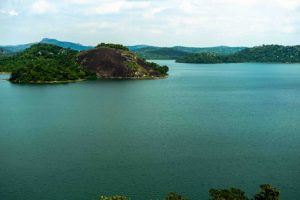Climate-Proof Travel: Itineraries Adapting to Extreme Weather
As climate change continues to wreak havoc on our planet, it has become increasingly important for travelers to consider the impact of their trips on the environment. Extreme weather events, such as hurricanes, floods, and wildfires, have become more frequent and severe, making traditional travel itineraries no longer viable options. In response, a new trend has emerged: climate-proof travel. This type of travel takes into account the changing climate and adapts itineraries to minimize the negative impact on the environment. In this article, we will explore the concept of climate-proof travel and provide tips on creating itineraries that can withstand extreme weather conditions.
What is Climate-Proof Travel?
Climate-proof travel is a sustainable and responsible approach to traveling that takes into account the effects of climate change. It aims to reduce the environmental impact of travel by considering the carbon footprint of transportation, the sustainability of accommodations, and the conservation of natural resources. At its core, climate-proof travel is about minimizing the negative effects of tourism on the environment, while still allowing travelers to explore and experience new destinations.
Adapting Itineraries to Extreme Weather
One of the key components of climate-proof travel is the adaptation of itineraries to extreme weather conditions. With the increasing frequency and severity of severe weather events, it is crucial to plan and prepare for potential disruptions to your trip. Here are some tips for creating climate-proof travel itineraries:
Research Weather Patterns
Before embarking on your trip, research the weather patterns of your destination. This will give you a better understanding of what to expect and enable you to plan accordingly. Be aware of peak seasons for extreme weather events, such as hurricane season in the Caribbean or monsoon season in Southeast Asia.
Diversify Itineraries
When planning your trip, try to diversify your itineraries to include activities that are not dependent on weather conditions. For example, if your original plans included a hiking trip, have a backup plan for indoor activities in case of inclement weather. This will prevent your entire trip from being ruined by one day of bad weather.
Choose Sustainable Accommodations
The type of accommodation you choose can have a significant impact on the environment. Opt for eco-friendly and sustainable accommodations, such as hotels that use renewable energy or have recycling programs in place. These accommodations are more likely to have sustainable practices and be equipped to handle extreme weather events.
Be Flexible
Even with careful planning, there is always a chance that your itinerary may be disrupted due to extreme weather. In such situations, it is essential to remain flexible and have a backup plan in place. Be open to changes and try to make the most of your trip, even if it is not going exactly as planned.
The Benefits of Climate-Proof Travel
By choosing to travel in a climate-proof manner, you are not only minimizing your environmental impact, but you are also contributing to the local economy and community. Sustainable and eco-friendly tourism can promote the conservation of natural resources, support the preservation of local cultures, and create jobs in the tourism industry. Additionally, with the increasing need for climate action, climate-proof travel can be seen as a responsible and ethical way of exploring the world.
In Conclusion
Climate-proof travel is not just a trend; it is a necessary response to the changing climate. By adopting a sustainable and responsible mindset, travelers can minimize their impact on the environment while still having a fulfilling travel experience. Remember to research weather patterns, diversify itineraries, choose sustainable accommodations, and remain flexible. With these tips in mind, you can create climate-proof travel itineraries that can withstand extreme weather and contribute to a more sustainable future for our planet.









